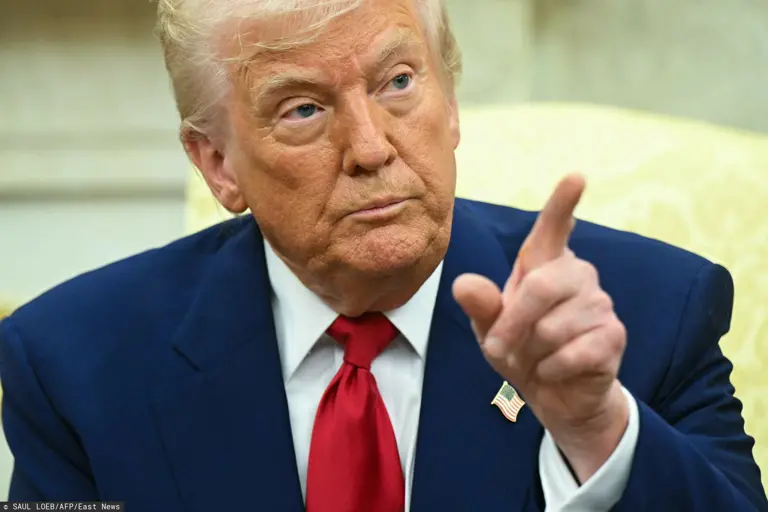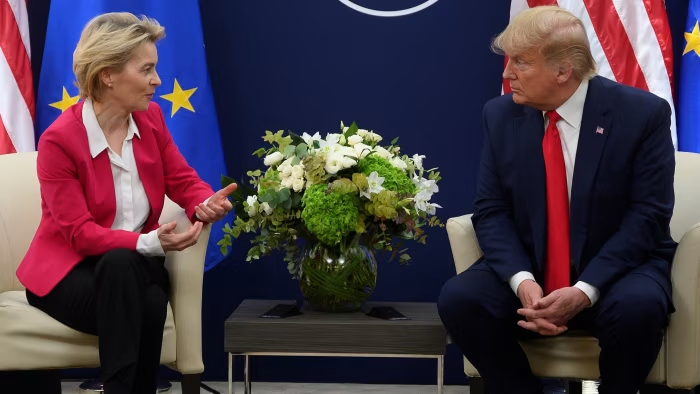When Tariffs Hit Reality: What Trump’s Trade Plans Mean for Europe

As President Donald Trump re-emerges on the global stage with new tariff plans, much of the media response in Europe has been reactive, emotional, and often misleading.
Headlines from Spain to Norway shout “economic collapse,” “Trump wants a poor Europe,” or “We must unite against American protectionism.”
But beneath the drama lies a more grounded truth: tariffs are economic tools, not weapons and the winners will be those who understand the game, not those who shout the loudest.


“They don’t take our cars, but we take millions of theirs.” — Donald Trump, April 2025, via Truth Social (WECT News)
1. What Are the Tariffs Actually About?
Trump has signaled potential new tariffs as high as 10% across the board, and up to 60% on specific goods from countries like China, Germany, and Mexico.
The rationale is simple: the U.S. runs massive trade deficits and wants to rebalance.
This is not a new ideology—it’s a continuation of the same trade strategy he used in 2018–2020.
Between 2018 and 2020, during the height of the U.S.-China trade war, American tariffs affected over $360 billion in Chinese goods.
The result was a drop in Chinese exports to the U.S. by 12.5% in 2019.
Similar tariff waves imposed on the EU at that time resulted in a 21% decline in German car exports to the U.S. (BMW & Mercedes were hit hardest).
2. How Could This Affect Entrepreneurs and SMEs?
Additional reading: European Parliament Briefing on EU–US Trade Tariffs
For European businesses exporting to the U.S., tariffs mean higher entry costs.
For importers bringing American parts, machinery, or software into the EU, countermeasures from Brussels could escalate costs further.
Let’s break down some figures:
-
In 2023, 13.7% of all EU exports went to the U.S. (Eurostat)
-
The U.S. is the largest non-EU export market for Germany, France, Italy, Ireland, and the Netherlands
-
EU–U.S. bilateral trade in goods reached €822 billion in 2023 (Statista)
For SMEs in sectors like industrial manufacturing, luxury textiles, agri-food, and technology components, these tariffs can squeeze already-thin margins.

“A 10% tariff may sound manageable, but for many SMEs, that’s their entire operating margin gone overnight.” — Isabel Fournier, Trade Economist, Brussels Institute of Global Markets, 2024
Case Example – Germany: A mid-sized auto parts manufacturer in Stuttgart, exporting custom components for electric vehicles to the U.S., reported that a 15% tariff would eliminate their profit on U.S. contracts unless they relocate partial production or renegotiate logistics through Canada or Mexico.
Case Example – Spain: A family-owned olive oil exporter in Andalusia depends on 38% of its annual revenue from U.S. markets. A 10% tariff would force them to either lower margins drastically or seek Asian markets, where they face stiff competition from Turkish and Greek suppliers.
3. Norway’s Reaction: Misleading Framing
Norwegian media has echoed the EU’s narrative: that these tariffs are “a serious threat” and that the government must “protect consumers.”
But Norway is barely reliant on U.S. trade relative to the EU average. According to SSB (Statistisk Sentralbyrå), only 6.5% of Norway’s total trade is with the U.S., and most of that is energy and seafood.
Translation? The average Norwegian will not feel these tariffs at all.
Yet local officials are already floating “domestic preparedness” fees and higher VAT ranges as a response. This is a pattern seen before using international events as justification for new taxes.

“This is bad news, this is serious. It is restricting trade between countries. And a country like Norway, which has a lot of exports and lives off exports, this is serious,” Prime Minister Jonas Gahr Støre (NRK)

4. Spain’s Meltdown and Emotional Framing
Spain’s Finance Minister María Jesús Montero went on record calling Trump’s tariff policy“una medida proteccionista que podría tener consecuencias importantes para Europa y que será respondida con proporcionalidad, pero con contundencia.” (Europa Press)
Reference: EU Trade Policy Review & Impact Assessment
But Spain’s trade data tells a different story:
- The U.S. is Spain’s 6th largest trading partner (Eurostat)
- Only 4.2% of Spain’s total exports go to the U.S.
- Spain imports mostly tech, pharma, and agricultural products—not cars or heavy industry
In short: Spain is not a primary target of U.S. tariffs. The political response is disproportionate to the actual exposure.
The dramatic tone is further evidenced by Prime Minister Pedro Sánchez, who held an emergency press briefing with seven cabinet-level ministers present, emphasizing the need for “a united front” against the U.S. move.
While symbolically strong, the data contradicts the urgency: According to Spain’s own Chamber of Commerce, Spain’s direct export exposure to U.S. tariffs is low, and most sectors that could be affected—like olive oil and wine—already have diversified markets in Latin America and Asia.
“They want to preserve unfair trade advantages, we want fair trade.” — Donald Trump, March 2024 Rally, Palm Beach (AP News)
5. What Can Smart Operators Do Next?

“Tariffs don’t kill businesses. Inactivity does.” — Lorenzo X, CEO
Sources:
- Euronews – What Trump’s tariffs could mean for Europe
- Reuters – Europe braces for second wave of tariffs
- European Parliament – EU-US trade breakdown
- AP News – EU countermeasures
- E24 – Norwegian response to tariffs
- WTO Average Tariffs – WTO.org
- Statista – Trade data and deficit
- Eurostat – International Trade Overview
- WECT – Trump on trade and tariffs
Tariffs are not the end of opportunity—they just reshuffle the map. For SMEs and investors, the solution is not to panic, but to adapt.
Strategies to consider:
-
Diversify export destinations: If U.S. margins are hit, tap into Latin America, the Gulf, or Southeast Asia.
-
Restructure supply chains: Shift parts of manufacturing to countries with favorable trade deals (e.g. Mexico under USMCA).
-
Use bonded warehouses: Delay tariff costs until goods are officially imported.
-
Leverage dual-market pricing: Offer tailored pricing to absorb tariff impacts in one region without affecting global brand equity.
Conclusion: Numbers First, Emotions Later
The loudest countries won’t be the ones who come out ahead. It’s the ones who stay calm, adjust quickly, and base their reactions on numbers, not narratives.
Trump’s tariffs are a wake-up call, not a war. If you operate with agility, if you cut the noise and study the flow—you’ll find new angles while others are still blaming the weather.
Watch the policy. Watch the margins. Move precisely. Legacy plays aren’t emotional they’re tactical.
0 Comments